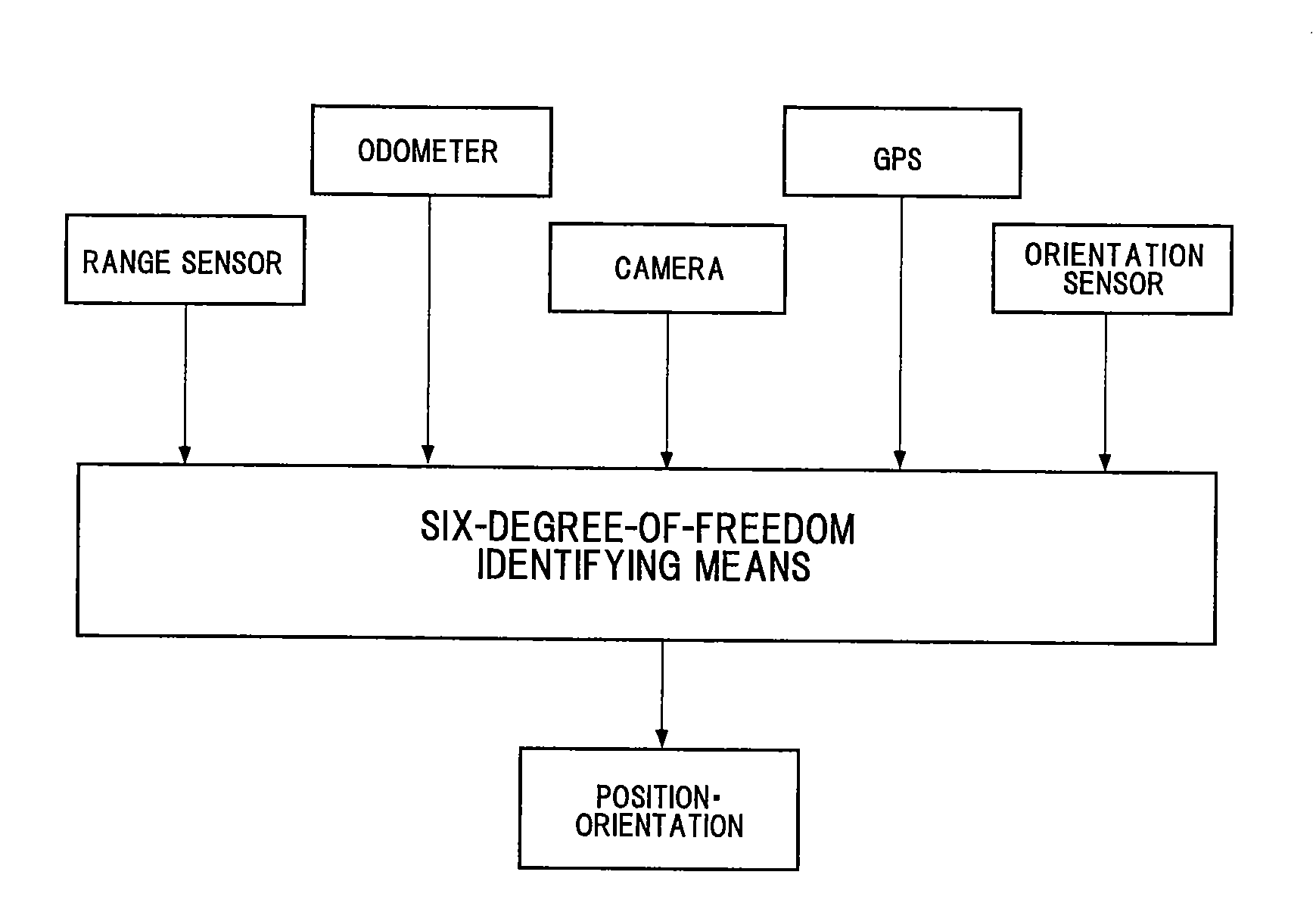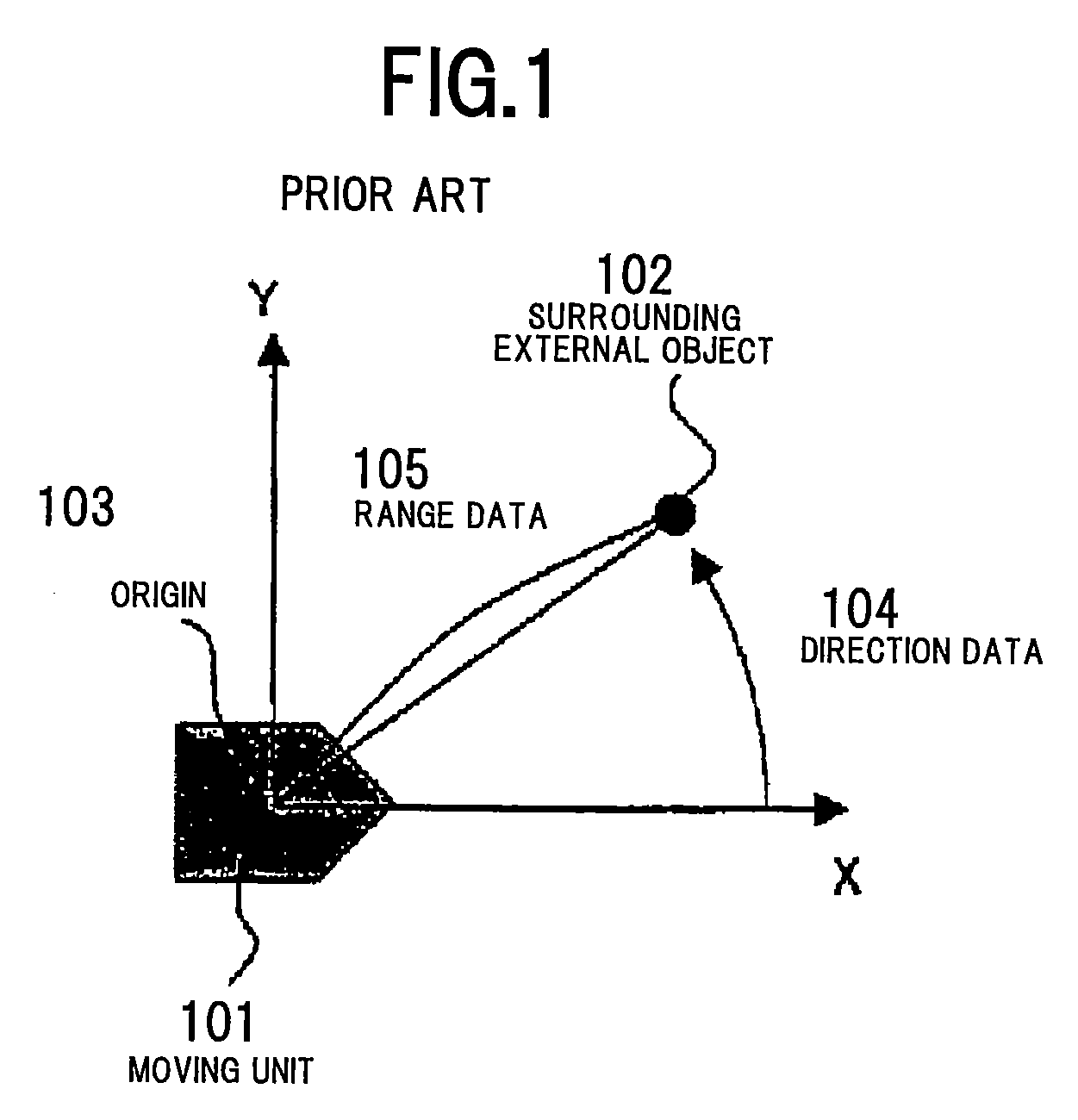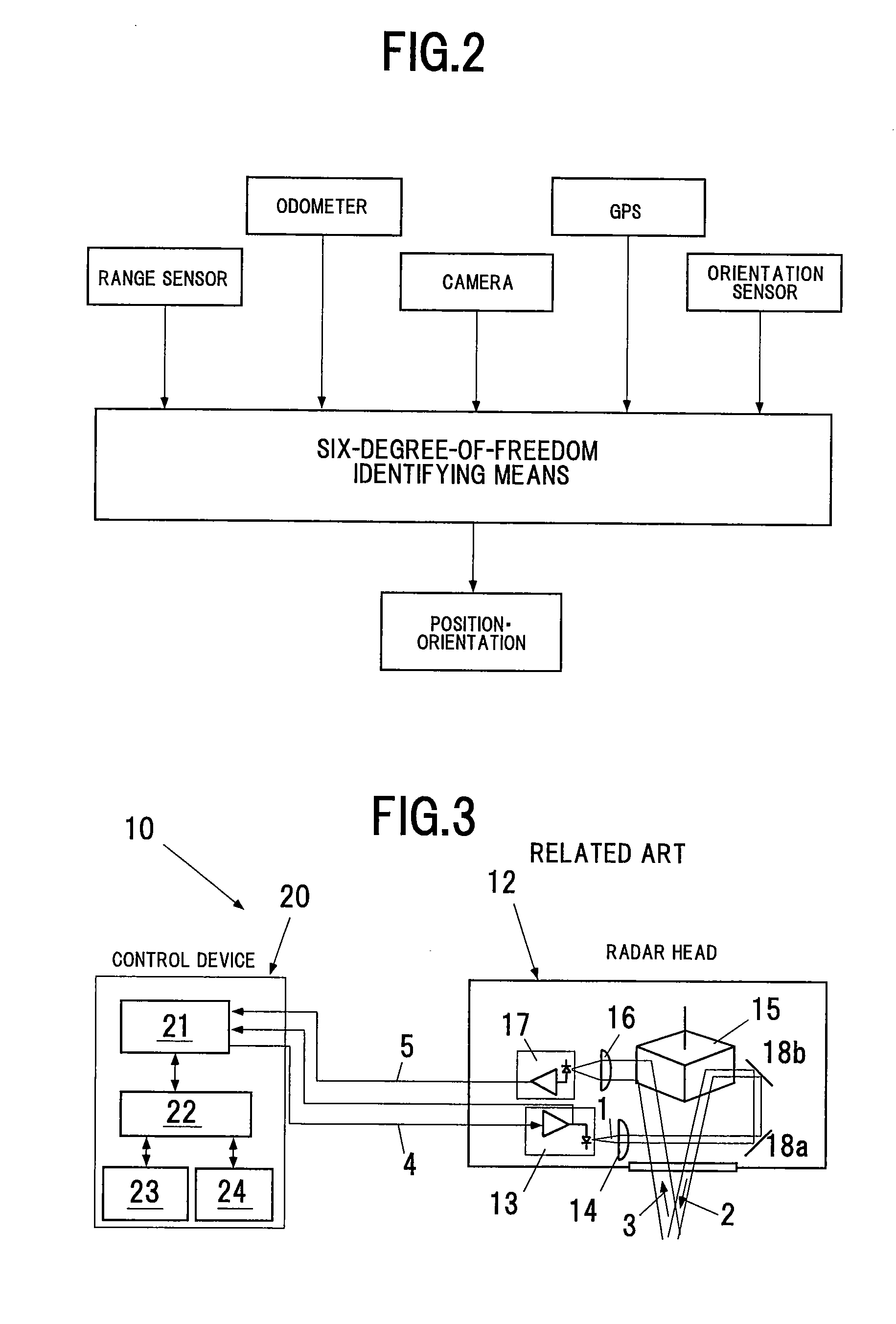Self-position identifying method and device, and three-dimensional shape measuring method and device
a self-positioning and measurement method technology, applied in the field of self-position identification methods and devices, and three-dimensional shape measurement methods and devices, can solve the problems of limited range, inconvenient measurement, and inability to accurately measure, and achieve the effects of accurate matching, excellent memory efficiency, and stable in regards to inadequate point quantities and errors in measured data
- Summary
- Abstract
- Description
- Claims
- Application Information
AI Technical Summary
Benefits of technology
Problems solved by technology
Method used
Image
Examples
Embodiment Construction
[0137]A preferred embodiment of the present invention will be explained below in reference with the drawings. Note that in each drawing, identical portions are assigned identical codes, and redundant explanations are omitted.
[0138]FIG. 2 is an overall structural diagram of the self-position identifying device as set forth in the present invention. In this figure, the self-position identifying device as set forth in the present invention is six-degree-of-freedom identifying means, a device that identifies the self-position through incorporating three-dimensional information from the outside from a range sensor, an odometer, a camera, a GPS, and an orientation sensor. Note that in the present invention, “self-position” means a position and orientation in six degrees of freedom in the external environment of the self-position determining device.
[0139]Note that in the present invention, the odometer, camera, GPS, and orientation sensor are not indispensable in addition to the range sens...
PUM
 Login to View More
Login to View More Abstract
Description
Claims
Application Information
 Login to View More
Login to View More - R&D
- Intellectual Property
- Life Sciences
- Materials
- Tech Scout
- Unparalleled Data Quality
- Higher Quality Content
- 60% Fewer Hallucinations
Browse by: Latest US Patents, China's latest patents, Technical Efficacy Thesaurus, Application Domain, Technology Topic, Popular Technical Reports.
© 2025 PatSnap. All rights reserved.Legal|Privacy policy|Modern Slavery Act Transparency Statement|Sitemap|About US| Contact US: help@patsnap.com



